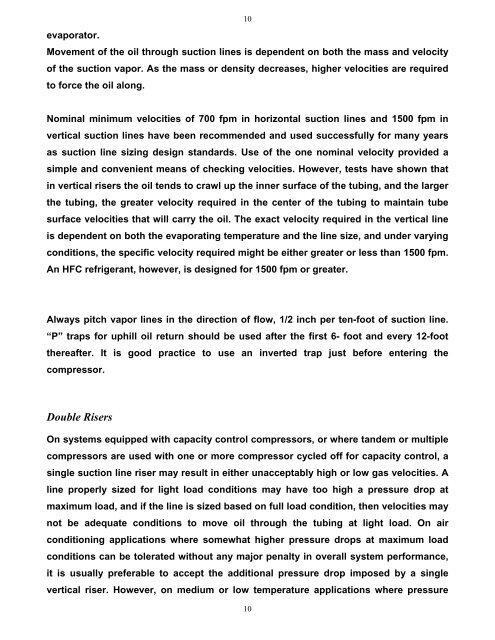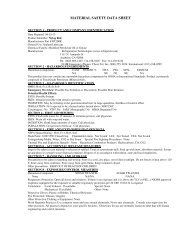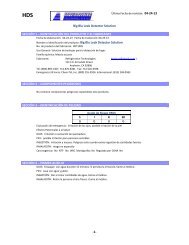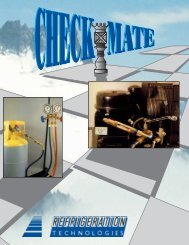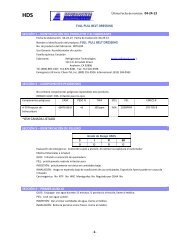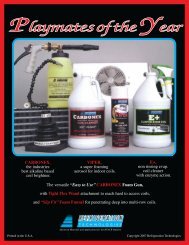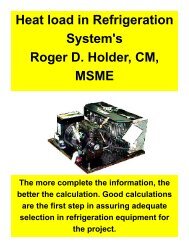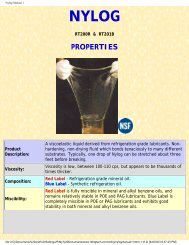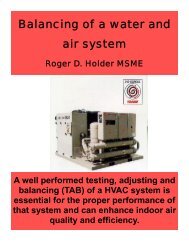Refrigeration Piping Charging Residential AirConditioning R
Refrigeration Piping Charging Residential AirConditioning R
Refrigeration Piping Charging Residential AirConditioning R
You also want an ePaper? Increase the reach of your titles
YUMPU automatically turns print PDFs into web optimized ePapers that Google loves.
10<br />
evaporator.<br />
Movement of the oil through suction lines is dependent on both the mass and velocity<br />
of the suction vapor. As the mass or density decreases, higher velocities are required<br />
to force the oil along.<br />
Nominal minimum velocities of 700 fpm in horizontal suction lines and 1500 fpm in<br />
vertical suction lines have been recommended and used successfully for many years<br />
as suction line sizing design standards. Use of the one nominal velocity provided a<br />
simple and convenient means of checking velocities. However, tests have shown that<br />
in vertical risers the oil tends to crawl up the inner surface of the tubing, and the larger<br />
the tubing, the greater velocity required in the center of the tubing to maintain tube<br />
surface velocities that will carry the oil. The exact velocity required in the vertical line<br />
is dependent on both the evaporating temperature and the line size, and under varying<br />
conditions, the specific velocity required might be either greater or less than 1500 fpm.<br />
An HFC refrigerant, however, is designed for 1500 fpm or greater.<br />
Always pitch vapor lines in the direction of flow, 1/2 inch per ten-foot of suction line.<br />
“P” traps for uphill oil return should be used after the first 6- foot and every 12-foot<br />
thereafter. It is good practice to use an inverted trap just before entering the<br />
compressor.<br />
Double Risers<br />
On systems equipped with capacity control compressors, or where tandem or multiple<br />
compressors are used with one or more compressor cycled off for capacity control, a<br />
single suction line riser may result in either unacceptably high or low gas velocities. A<br />
line properly sized for light load conditions may have too high a pressure drop at<br />
maximum load, and if the line is sized based on full load condition, then velocities may<br />
not be adequate conditions to move oil through the tubing at light load. On air<br />
conditioning applications where somewhat higher pressure drops at maximum load<br />
conditions can be tolerated without any major penalty in overall system performance,<br />
it is usually preferable to accept the additional pressure drop imposed by a single<br />
vertical riser. However, on medium or low temperature applications where pressure<br />
10


